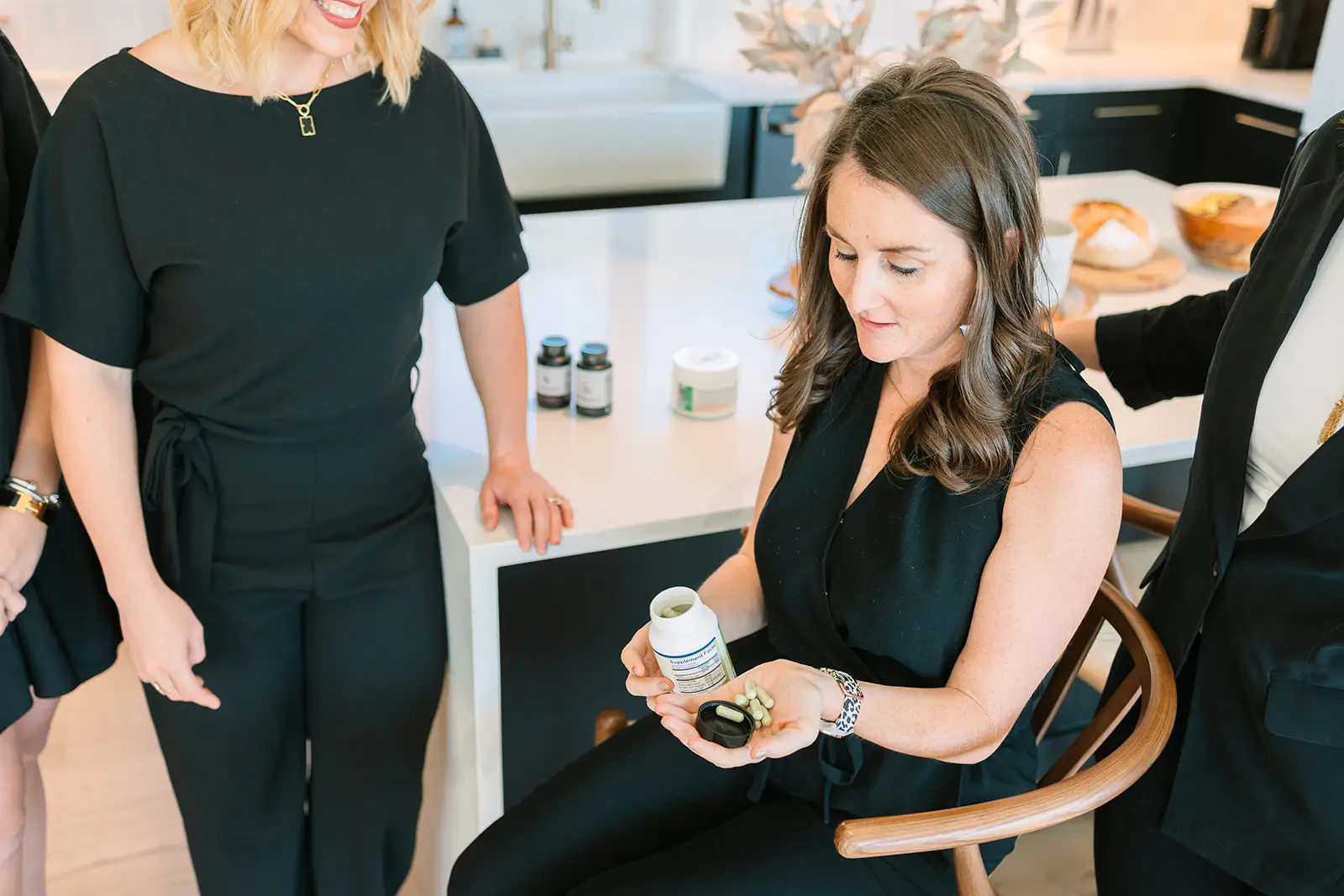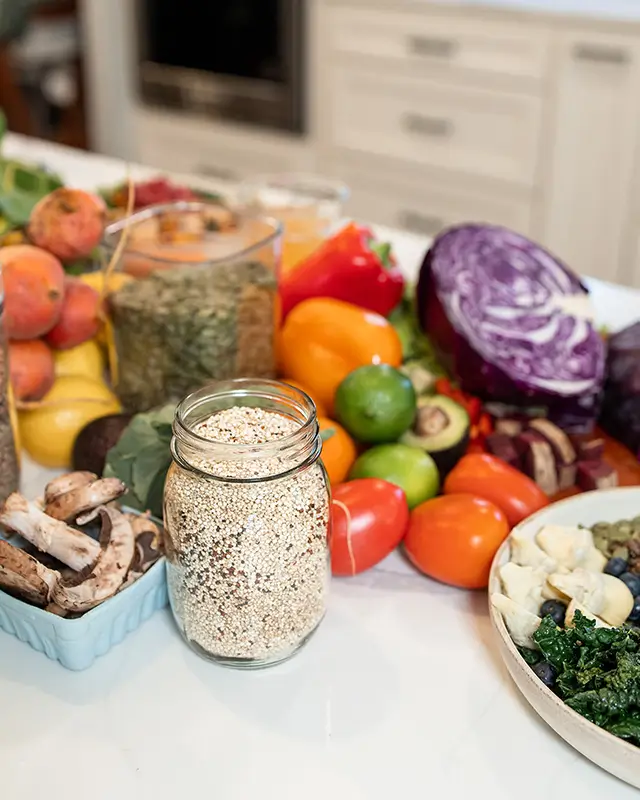This post contains affiliate links. This means that if you make a purchase from one of my links I do make a small commission, but at no cost to you. Thank you for supporting my work!
Traveler’s diarrhea is usually caused by consuming food or water that contains unfamiliar bacteria, viruses, or parasites, especially in areas where sanitation standards or gut microbial exposures are different from what you’re used to.
This doesn’t always mean something is “dirty”, it’s just different. Your gut microbiome thrives on routine, so even small changes in food, water, and environment can throw things off.
Symptoms of Traveler’s Diarrhea
- Loose or watery stools (usually 3+ times in 24 hours)
- Urgency to use the bathroom
- Abdominal cramping
- Nausea or vomiting
- Mild fever
- Fatigue or dehydration
Symptoms typically show up within a few days of arrival and can last anywhere from 1–5 days, although lingering digestive symptoms can continue if the gut isn’t properly supported.
How Your Gut Becomes Vulnerable While Traveling
Even if your digestion feels solid at home, the gut is sensitive to changes in:
- Water and food sources: Local microbes in water, ice, and fresh produce can overwhelm your gut defenses.
- Sleep schedule and circadian rhythm: Jet lag and irregular sleep disrupt gut motility and immune function.
- Stress and stimulation: New environments, airports, and social interactions increase stress hormones that slow digestion and weaken gut lining integrity.
- Dehydration: Flying, hot climates, and sightseeing often mean you’re sweating more and possibly drinking less (or consuming more alcohol than normal) both of which drain minerals your gut needs to function.
- Stomach acid suppression: Whether from stress or acid-blocking medications, low stomach acid reduces your ability to kill off incoming pathogens.
Side Effects to Watch For
Even after the acute phase passes, many people are left with:
- Ongoing bloating, gas, or food sensitivity
- Constipation or IBS-like symptoms
- Post-infectious SIBO
- Depleted minerals (especially potassium and sodium)
- Weakened immune response or recurring gut infections
This is why prevention and post-travel support are so important. Not just for a smooth trip, but for long-term gut health. Unfortunately, a lot of the women we work with in gutTogether® can trace their symptoms back to either a food poisoning event or a trip gone bad.
How to Prevent Traveler’s Diarrhea
The best way to prevent travelers diarrhea is by preparing your gut before you even board the plane (or hit the road). Here’s what I recommend to clients:
- Be cautious with water: Drink bottled or filtered water (not tap), avoid ice, and brush your teeth with bottled water when traveling to higher-risk areas. I love traveling with my clearly filtered water bottle. It has a built-in filter which gives such peace of mind!
- Be mindful of raw foods: Wash fruits and veggies with filtered water, and skip raw seafood or undercooked meats in unfamiliar places.
- Strengthen your gut ahead of time: A few weeks before travel, consider adding:
- Saccharomyces boulardii – a travel-friendly probiotic yeast that helps protect the gut from pathogens
- Immunoglobulins – bind unwanted microbes and support a healthy gut lining
- Digestive bitters or enzymes before meals support stomach acid production and digestive enzymes
- Saccharomyces boulardii – a travel-friendly probiotic yeast that helps protect the gut from pathogens
- Pack gut-friendly travel essentials: Minerals and electrolytes, ginger or peppermint tea, and your preferred digestive supplements.
Want my full list of travel-friendly gut supplements? Click here for my Fullscript list (if you don’t have an account, you can make a free account first).
Build a Resilient Gut Before You Travel
The real first line of defense? A diverse, well-fed microbiome.
When your gut is home to a wide variety of beneficial bacteria, it becomes much harder for the “bad guys” to take over. Think of it like a fully booked hotel: there’s simply no room for harmful microbes to move in. Regularly eating fermented foods, fiber-rich plants, and rotating your produce at home can help build microbial diversity that offers lasting protection, even when you travel.
And while you can’t build a rock-solid microbiome overnight, even a few small changes in the weeks leading up to your trip can make a difference.
What to Do If You Get Traveler’s Diarrhea
If symptoms hit, the faster you act, the better. You want to support the body’s natural elimination process without suppressing it completely, while also calming inflammation and replenishing lost nutrients.
Here’s what I recommend starting immediately:
High-Dose Saccharomyces Boulardii
Start with 5-10 billion CFU per day to help reduce the severity and duration of diarrhea, support beneficial bacteria, and prevent post-infectious dysbiosis.
Immunoglobulins
Start with 5-10 grams per day. Immunoglobulins bind toxins and unwanted bacteria in the gut, calm inflammation, and promote healing of the gut lining. They’re especially helpful if you’re feeling inflamed, crampy, or sensitive. Increase the dose as you can until your loose stools stop and stop increasing if your bowels get stopped up. Read here why I prefer immunolin over colostrum.
Rehydrate + Re-mineralize
You lose a lot of fluids and minerals when dealing with diarrhea. Replenish sodium, potassium, and magnesium with a high-quality electrolyte drink. Ideally one that’s low in sugar and contains more than just sodium.
🍽 Eat Light and Soothing
Stick to simple, gut-friendly foods like white rice, cooked veggies, and bone broth. Sip on peppermint, chamomile, or ginger tea to reduce cramping and nausea.
💤 Rest and Monitor
Give your body space to recover. Most cases improve within a few days, but if symptoms worsen or last longer than 5–7 days, it’s worth getting tested for parasites or bacterial overgrowth when you return.
If symptoms linger after travel, we use functional stool testing inside gutTogether® to identify lingering infections or imbalances and create a personalized recovery plan.








